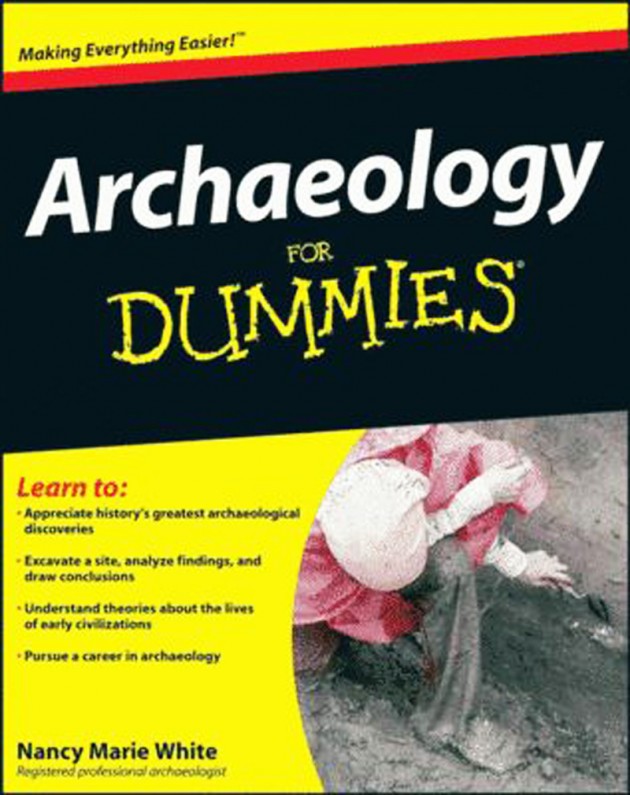‘Dummies’ author hopes to end archaeology misconceptions

A USF professor of archaeology wants students to know one thing: Archaeology is not just about dinosaurs.
In her book Archaeology for Dummies, Nancy Marie White explains what archaeology is all about. The book provides an overview of the field of archaeology and its different types.
It covers prehistoric and historic archaeology, and includes information on the past 2 million years of human existence.
White said the book is aimed at a lay audience and offers advice on how to get involved in archaeology as well as information for those considering a career in the field. For students, she said it could serve as a good supplement to a textbook.
White said one of her main reasons for writing the book is her desire to fight stereotypes and make the public realize that archaeology is relevant and important.
“Archaeology is studying what people left in the past,” she said. “We have to fight all these public notions. We barely have time to teach real archaeology, because first we have to get rid of all these stereotypes — Indiana Jones, the dinosaurs, and the rocks and the bones.”
Archaeology has a purpose in everyday life, she said, because it teaches people about their heritage and the pasts of ethnic groups that lack written histories.
“We’re just trying to learn how people in the past lived,” she said. “How did they get along?”
White said she drew upon her 25 years of teaching experience as an archaeology
professor at USF, as well as extensive field experience, to write the book. She was given a little over four months to do so and worked almost entirely on her own.
Archaeology for Dummies is the first non-scholarly book that White, who has authored several academic books and papers, has published.
The book includes photographs from her various expeditions, including several from a trip to Europe that White took right before the book was published.
Lee Hutchinson, senior archaeologist at Archaeological Consultants in Sarasota, served as the book’s technical editor and said the addition of personal experience increases the attractiveness of the book.
“She used a lot of her own personal experiences in the book and took the reader to places around the world that she has been to,” Hutchinson said. “It makes the archaeology more real when someone who’s been there, experienced it and done it presents it.”
Elizabeth Bird, professor and chairwoman and director of the Center for Applied Anthropology at USF, said the book’s appeal to the general public is in line with the vision of White’s department.
“The mission of our department is applied anthropology, and often that means translating anthropology and archaeology to the public,” she said.
Bird said the department speaks to the public via exhibits and newspapers, and this book is another example of that kind of public archaeology.
“We translate what we do for the public so they’ll understand the value of archaeological heritage and archaeological preservation,” she said. “It fits very well with what we do as a department.”
Hutchinson said there is a need for a book that aims to make the public realize what archaeology is about and why it is important.
“I think that so much of our history and prehistory is disappearing because of development,” she said. “Too many people have this idea of ‘out with the old and in with the new,’ and we are losing lots of sites, whether they be structures above the ground or sites unseen under the ground. I think this book shows how important any kind of site is, whether you can see it or not.”






